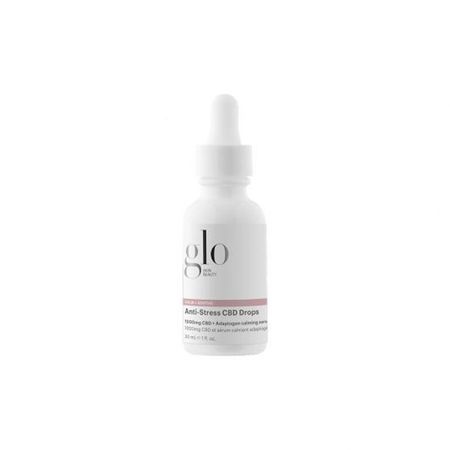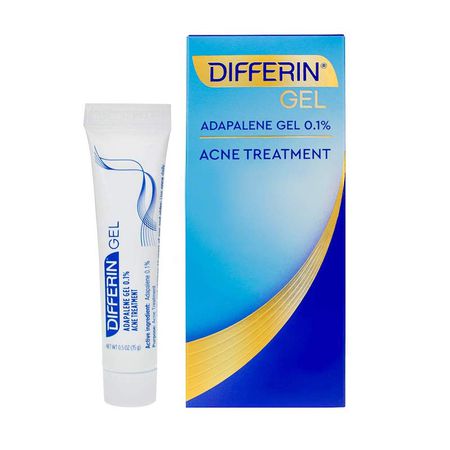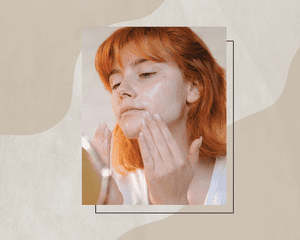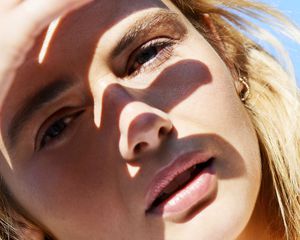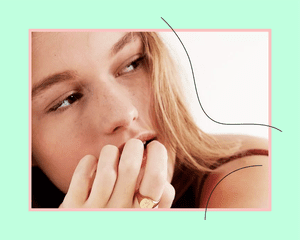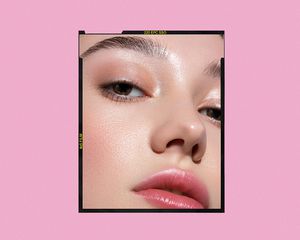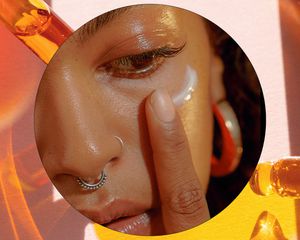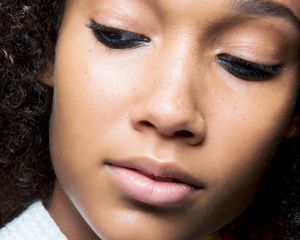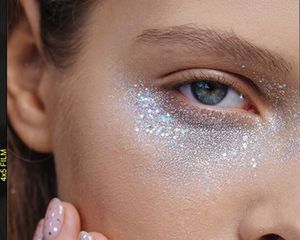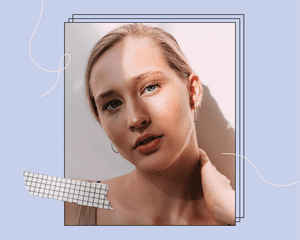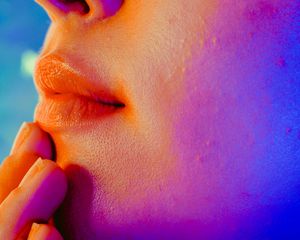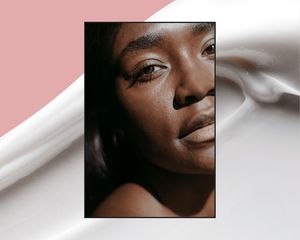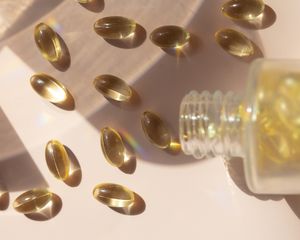
Campbell Addy / Getty Images
All over the world, people apply rouge to their cheeks to enhance their bone structure, illuminate their skin, and bring out other facial features. Sometimes, however, rosy cheeks aren't a desired aesthetic—especially if you feel like the flushing has a pathogenic cause.
We asked board-certified dermatologist Dendy Engelman, MD, board-certified general internist Holly Phillips, MD, and board-certified physician associate Nina Sedighi about the common causes of, and treatments for, rosy cheeks. Keep reading for what they had to say.
Meet the Expert
- Dendy Engelman, MD, is an award-winning, board-certified cosmetic dermatologist and Mohs surgeon at The Shafer Clinic in New York City.
- Holly Phillips, MD, is a board-certified general internist, writer, and television journalist based in New York City.
- Nina Sedighi, PA-C, is a board-certified physician associate at SkinSpirit, a medical spa in Beverly Hills.
Rosacea
One of the most common causes of rosy cheeks is rosacea which, according to Engelman, is an autoimmune reaction. "We all have microorganisms living on our skin, and they help keep our skin barrier healthy by fighting potentially harmful bacteria. However, some people’s immune systems treat these microorganisms as potential threats and fight them, resulting in rosacea." She elaborates, explaining that "rosacea can manifest as a variety of symptoms, including flushed cheeks or redness on the face and other areas of the skin."
Treatment includes a medical diagnosis. "I prescribe Rhofade to patients who have rosacea," explains Engelman. "Rhofade is the first and only alpha1A adrenoceptor agonist approved for persistent facial erythema associated with rosacea in adults. Rhofade (oxymetazoline hydrochloride) cream, 1%, is FDA-approved for the topical treatment of persistent facial erythema (redness) associated with rosacea in adults. Using it consistently will help manage the redness and minimize flushing."
For milder cases that don't require prescription treatment, Engelman likes Glo Skin Beauty's Anti-Stress CBD Drops. "They are a great calming solution for milder rosacea or rosy cheeks. Formulated with an adaptogen blend including 1000 mg of broad-spectrum CBD, ashwagandha, and reishi mushroom, this serum is clinically proven to reduce redness and calm skin with consistent use."
Additionally, rosacea can be managed by avoiding triggers, according to Sedighi. "Common rosacea triggers include emotional stress, alcohol, spicy foods, sun exposure, hot or cold weather, and heated beverages."
"Certain skincare products, especially those containing alcohol, can also trigger a rosacea flare-up," she adds. "It’s nearly impossible to avoid the sun altogether, so sun protection is a must." Her recommendations include everyday use of a "broad-spectrum SPF 30 or higher when outdoors; wearing a hat is also helpful." She notes that taking care when washing your face can help manage symptoms. "A mild cleanser should be gently applied and rinsed with either lukewarm or cool water, and your face should be gently patted dry with a soft towel."
Acne
Acne is often associated with redness. Sedighi explains: "To treat redness from acne, the focus should be on reducing the inflammation. Over-the-counter topical medications are available to help minimize redness from acne and aid in the healing of blemishes."
"As anyone who has ever had a pimple knows, acne appears on the skin as red, raised bumps," concurs Engelman. "When facial acne is severe (cystic acne, or reoccurring clusters of acne) the inflammation can make the cheeks appear red." Therefore, in order to treat rosy cheeks that result from acne, "treat the acne itself," says Engelman.
Her approach is multi-step. "You can start by double cleansing the face, first with a cleansing oil, then with a face wash (cleansers with salicylic acid are helpful in reducing acne, but avoid using if you have sensitive or dry skin). This removes any impurities, excess oil, and buildup that may be clogging your pores. Salicylic acid, benzoyl peroxide, and chemical exfoliants are all topical ingredients that help increase cell turnover and dry out acne, resulting in clearer skin over time."
She also advises skin turnover. "I like Differin, which can be used all over the face to treat acne. If you already have dry skin, targeted acne treatments may be too harsh; instead, strengthen your skin barrier with nourishing (but not occlusive) ingredients like hyaluronic acid, ceramides, and peptides; this works because a compromised skin barrier is more likely to develop acne, so by boosting the health of your skin barrier, you’re supporting clearer skin. If the acne is severe and persistent, I recommend seeing your dermatologist, who may recommend a prescription-strength treatment like tretinoin (aka retinoic acid)."
Spider Veins
Spider veins can manifest as rosiness in the cheeks, as Engelman explains. "Spider veins occur when capillaries (tiny blood vessels) become dilated (enlarged), making them visible under the skin and causing redness around the area."
Her go-to treatment for spider veins is laser therapy. "Vbeam Prima Pulsed Dye Laser is one of the most effective, as it breaks down the blood vessels without causing harm to any surrounding tissue; darker skin tones should opt for an Nd:YAG Laser instead, as it is not as easily absorbed by melanin, meaning that there is a lower risk of hyperpigmentation."
Sedighi notes that "a common cause of spider veins is photo-aging, which is aging related to sun exposure; yet another reason why wearing daily SPF is so important." At the medispa where she works, she helps treat patients with laser procedures, and like Engelman, she finds this method highly successful. "Treating spider veins usually requires maintenance, as they typically come back and can progress with age. A common treatment is Intense Pulsed Light (IPL). IPL treatment utilizes a high-intensity source of light, which can help reduce the appearance of spider veins. It does so by heating and damaging the walls of the blood vessel, which causes them to collapse and disappear over time. Typically, three to five sessions are recommended, spaced out at least a month apart." Additionally, she recommends the use of "the Vbeam Laser or the Nd: YAG Laser, which is ideal for darker skin types."
Food or Drink Allergy
It's no secret that what we eat can have a physical effect, as our bodies process certain foods and chemical reactions occur during the process. "Spicy foods, hot sauces, peppers, seasonings, and spices can all cause dilation of vessels in the face resulting in temporary flushing," explains Phillips. Food sensitivity can also trigger flushing. "For some people who are sensitive, dairy, chocolate, and citrus fruits are other culprits of a post-prandial flush. If this happens repeatedly or is accompanied by other symptoms, especially itching or tightness in the throat, a visit to the allergist is in order," she says.
Additionally, some people develop facial flushing after drinking alcohol notes Phillips. "An enzyme called aldehyde dehydrogenase is required for the fast metabolism of alcohol. In those with a deficiency of aldehyde dehydrogenase, alcohol is metabolized more slowly allowing acetaldehyde to build up," she explains. "Acetaldehyde causes blood vessel dilation in the face and can cause other symptoms like nausea, lightheadedness, and headaches. The flushing resolves once the alcohol is out of your system."
Medication Reaction
According to Phillips, the list of "medications that can cause facial flushing is incredibly long. Some of the most common include the supplement niacin and blood pressure medications (calcium channel blockers in particular)." She adds that a "heart medication called nitroglycerin, as well as several antibiotics, vancomycin especially, are other common culprits."
If you notice any symptoms that might be a reaction to prescription medicine, bring them to the attention of your physician.
Pregnancy
Pregnancy flushing, also known as pregnancy glow, is quite common according to Phillips. "During pregnancy, the volume of circulating blood in the body expands to support the uterus and other organs as the baby grows." As a result, she explains, "the increased blood flow dilates blood vessels and can increase the number of small blood vessels and capillaries in the face (and hands)."
She notes there's nothing to be done about this, and typically, flushing resolves postpartum.
Menopause
Another cause of flushing for people assigned female at birth is menopause. "Many people describe a sensation of warmth moving up from their chest to their neck and then face," explains Phillips. This is what's known as a hot flash. "During a hot flash, your face may become red."
Hormonal fluctuations are most likely the cause. "The flashes are thought to be caused primarily by shifting levels of several hormones," she explains. "A decrease in estrogen, for example, can cause the hypothalamus in the brain (which functions as the body’s thermostat) to perceive an increase in body temperature. The hot flash, with vasodilation in the face, is a mechanism to help cool the body down."
Hot flashes generally resolve a short while after menopause. Phillips recommends talking to your physician for advice, as "there are many different treatment options—ranging from mind-body therapies to supplements and prescription medications—to help."
Autoimmune Disorders
A couple of autoimmune disorders might be the underlying cause of facial flushing, though of course a more formal diagnosis and co-presentation of symptoms are needed. "The autoimmune disorder lupus results in a dark, purplish, butterfly-shaped rash across the cheeks. While the intensity can vary from day to day, unlike traditional flushing it does not resolve," explains Phillips.
She notes that several types of endocrine disorders can trigger facial flushing including "pheochromocytoma, which is a rare, adrenal tumor that causes extreme hypertension along with facial flushing, headaches, palpitation, diarrhea, and sweating. These symptoms aren’t subtle and are a sign for medical diagnosis right away."
She flags another endocrine disorder known as "Cushing’s syndrome, which results in the body producing high levels of the hormone cortisol. In addition to facial flushing, the symptoms include sudden onset of diabetes, upper body weight gain, and palpitations."
Treatment in all cases, according to Phillips, is to diagnose and treat the underlying disorder.
Exercise
One of the most common causes of facial flushing is exercise. When we get moving, we often feel a warm sensation that spreads to the face and cheeks. You might be tempted to think this is because of increased blood pressure, but Phillips corrects this notion. "After exercise, your face is likely to be red due to increased blood flow. Although blood pressure might be transiently elevated, it’s the blood flow, not the blood pressure, that results in the redness."
Typically, this resolves as soon as you reach a resting state.


